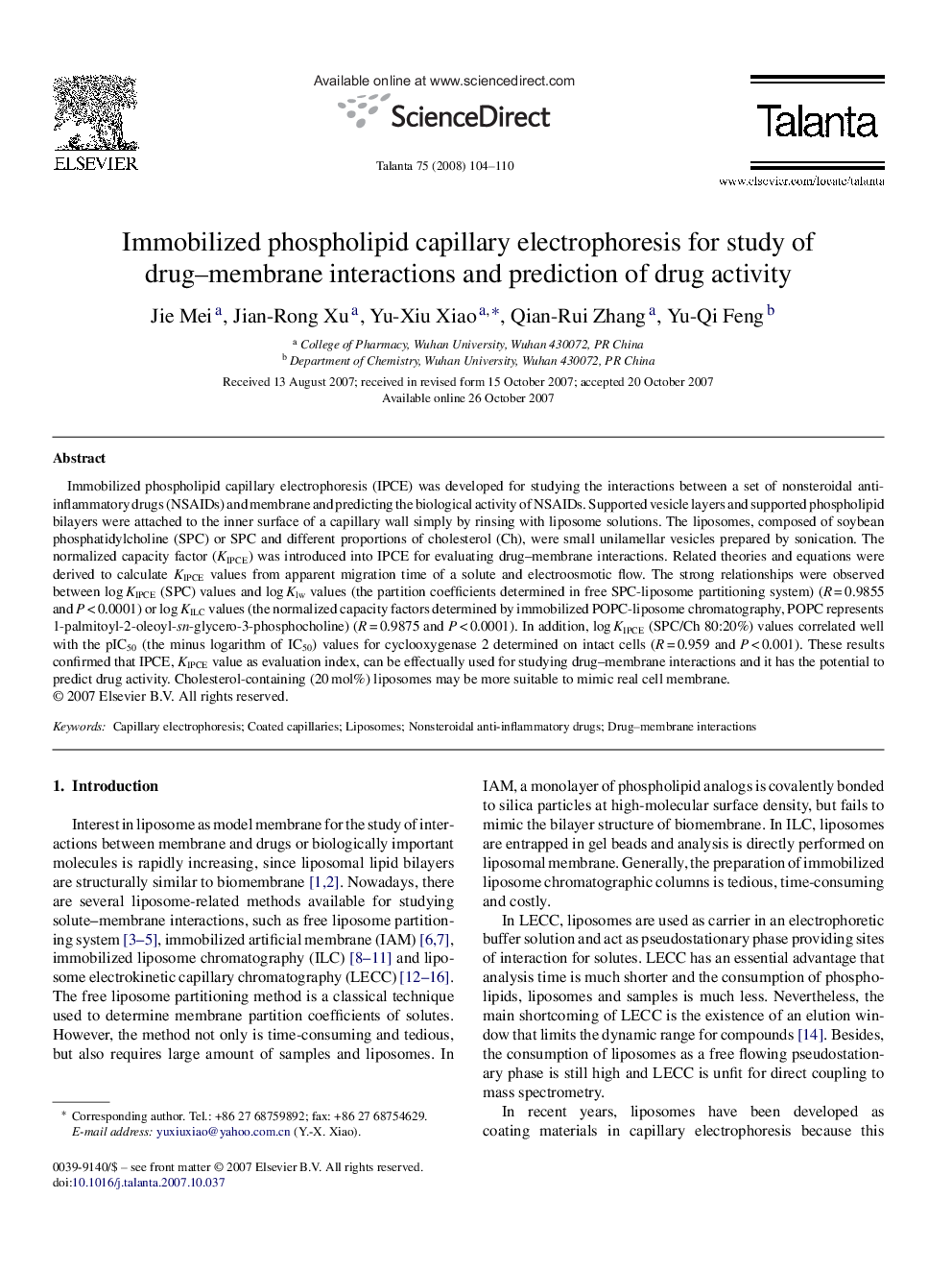| Article ID | Journal | Published Year | Pages | File Type |
|---|---|---|---|---|
| 1245526 | Talanta | 2008 | 7 Pages |
Immobilized phospholipid capillary electrophoresis (IPCE) was developed for studying the interactions between a set of nonsteroidal anti-inflammatory drugs (NSAIDs) and membrane and predicting the biological activity of NSAIDs. Supported vesicle layers and supported phospholipid bilayers were attached to the inner surface of a capillary wall simply by rinsing with liposome solutions. The liposomes, composed of soybean phosphatidylcholine (SPC) or SPC and different proportions of cholesterol (Ch), were small unilamellar vesicles prepared by sonication. The normalized capacity factor (KIPCE) was introduced into IPCE for evaluating drug–membrane interactions. Related theories and equations were derived to calculate KIPCE values from apparent migration time of a solute and electroosmotic flow. The strong relationships were observed between log KIPCE (SPC) values and log Klw values (the partition coefficients determined in free SPC-liposome partitioning system) (R = 0.9855 and P < 0.0001) or log KILC values (the normalized capacity factors determined by immobilized POPC-liposome chromatography, POPC represents 1-palmitoyl-2-oleoyl-sn-glycero-3-phosphocholine) (R = 0.9875 and P < 0.0001). In addition, log KIPCE (SPC/Ch 80:20%) values correlated well with the pIC50 (the minus logarithm of IC50) values for cyclooxygenase 2 determined on intact cells (R = 0.959 and P < 0.001). These results confirmed that IPCE, KIPCE value as evaluation index, can be effectually used for studying drug–membrane interactions and it has the potential to predict drug activity. Cholesterol-containing (20 mol%) liposomes may be more suitable to mimic real cell membrane.
